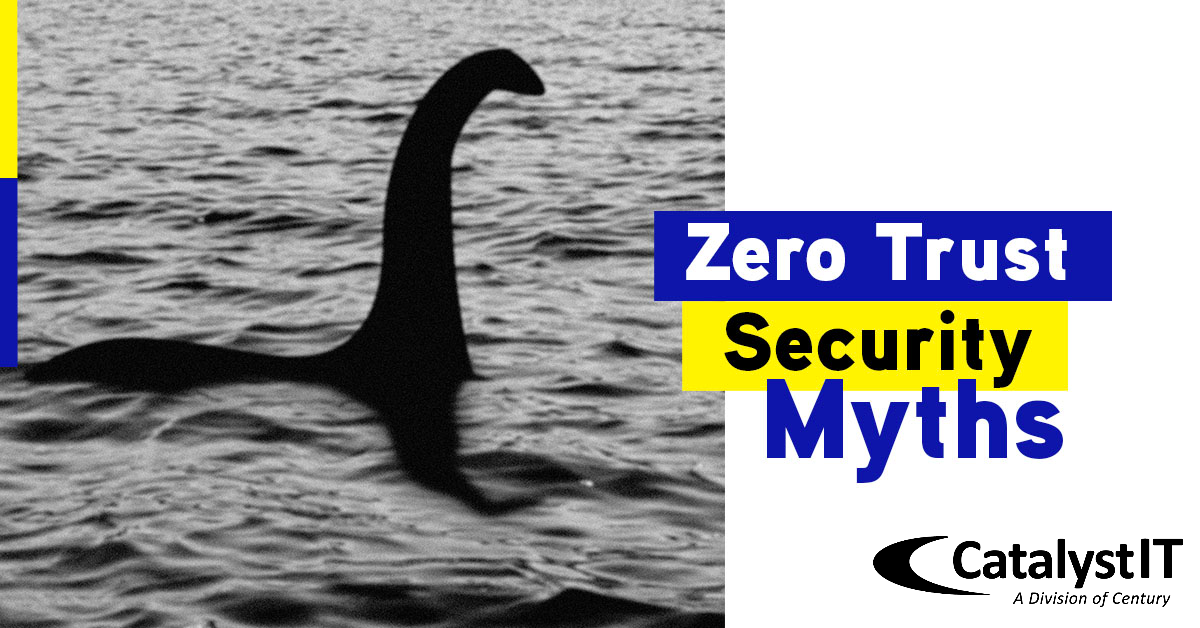What are Zero Trust Security Myths?

Businesses are constantly at risk of being targeted by a cyberattack in today’s tech-forward economy. Adopting a zero-trust security model could be a wise decision from a cybersecurity point of view for any size business. So, what are zero trust security myths?
Zero trust works on the premise that everything poses a risk to your network and must prove trustworthy before accessing the organization’s network or data. It’s like looking through a peephole before opening your hotel door. By insisting on verification and authentication at every step, zero trust makes it difficult for a hacker to gain access through a compromised user account or device.
However, with the increasing relevance of the zero-trust framework, there also has been an increase in misinformation surrounding it, fueled mainly by security vendors vying to sell their miracle solutions. In this blog, we will discuss the most common zero-trust security myths and how an IT service provider can ease the entire process without you facing any roadblocks.
Top zero-trust myths busted:
Let’s take a quick look at the four common myths surrounding the zero-trust framework and dispel them with facts:
Myth #1: I can achieve zero trust for my business by using a zero-trust product.
Fact: There are no miracle zero-trust solutions. Zero trust is a security strategy that needs to be implemented systematically. However, you can use solutions and tools to support the framework. Consider taking the help of an IT security provider to identify and implement the solutions best suited for your business.
Myth #2: Zero trust is too complicated for me to implement.
Fact: It can be challenging for businesses with limited knowledge or resources to achieve a zero-trust security framework. Contacting an IT service provider can help you understand your business’s risk profile and develop a realistic roadmap to implement a comprehensive and effective zero-trust security strategy.
Myth #3: Zero trust will make it difficult for my employees to do their jobs and negatively impact productivity and morale.
Fact: It enables a better user experience and promotes increased collaboration. However, there are always chances for increased friction and decreased efficiency due to the additional security layers. This is where Catalyst IT would be able to provide help and strategies by suggesting user-friendly policies and easy-to-use solutions that balance security with convenience so your employees can perform their jobs seamlessly.
Myth #4: Implementing zero trust is too expensive.
Truth: Implementing zero trust can be expensive, but that cost is still less compared to the fortune you may have to shell out in the event of a major cybersecurity incident. You may have to deploy additional resources and tools to get the best out of a zero-trust security model.
The time to act is now.
By now, it must be clear that zero trust is a great security framework to adopt if you want to protect your business against cyberattacks while ensuring business continuity in the event of a breach. However, implementing zero trust on your own can be a challenge. That’s why partnering with a specialist like Catalyst IT would be the best option. Reach out to us to learn how you can leverage our expertise to implement an efficient zero-trust model with minimal effort. Start your journey today to a more secure future for your business with a zero-trust security model.


